In 2018, a few neighbours in the Putterill valley came up with a dream of combining their properties into a joint nature reserve. That dream evolved into an idea, from which grew a plan, and finally, as of the 18th of April 2024, a reality. Comprising 6,500 hectares, the Northern Drakensberg Nature Reserve (NDNR), of which The Cavern / Sungubala is a founding member, is KwaZulu-Natal’s newest nature reserve, and one of the most significant conservation achievements across southern Africa in recent years.
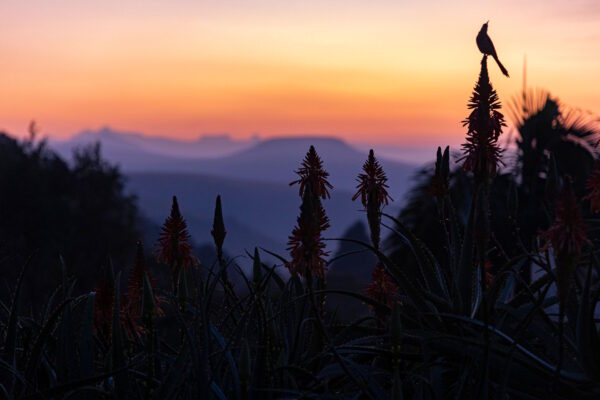
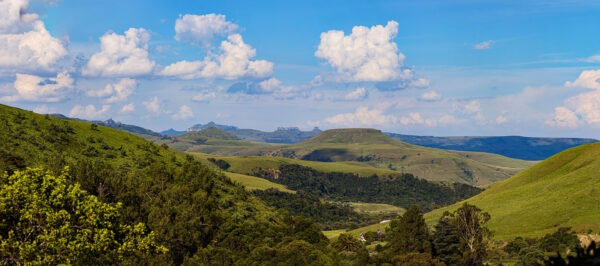
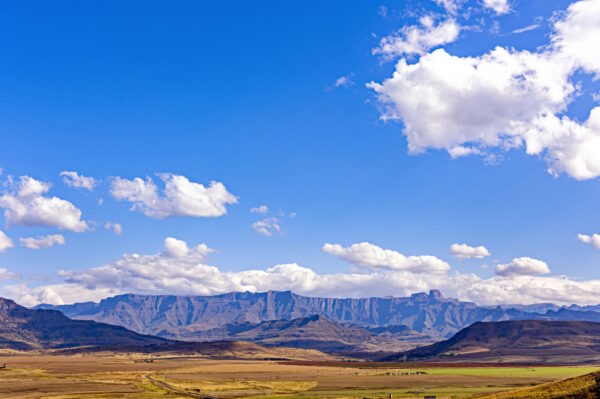
The establishment of the NDNR is a truly collaborative effort, representing the sweat and toil of various actors, ranging from small private landowners all the way to the World Wildlife Fund. It also represents a giant leap ahead in the consolidation of various tracts of the Drakensberg into a single conservation corridor, linking Sterkfontein Nature Reserve in the Free State with the uKhahlamba/Maloti Drakensberg Park in KwaZulu-Natal, the latter also being a World Heritage Site.
Broadly speaking, the purposes of the NDNR are to (i) conserve animal species and habitats, (ii) enhance regional water security, (iii) preserve the area’s rich cultural heritage, and (iv) further socio-economic upliftment in the local community.
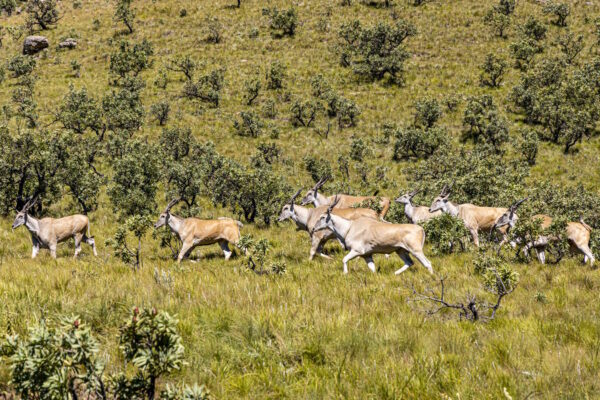
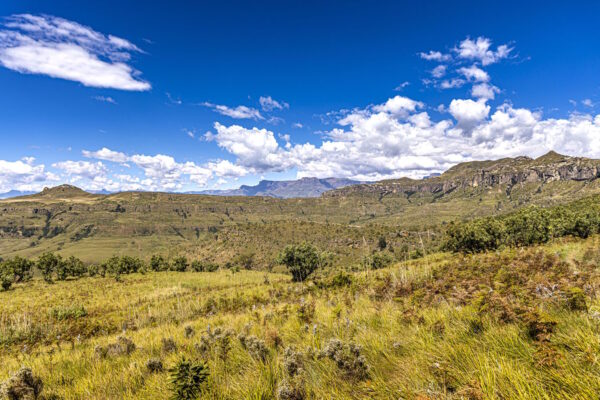
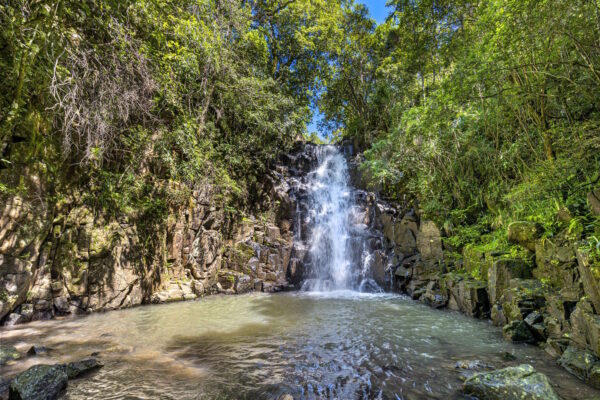
On the conservation front, the NDNR is home to several species of antelope (including the majestic Eland) and other mammals, a rich diversity of bird life (including the extremely rare bearded vulture), and even a few predators, such as spotted hyena and the elusive leopard. The story of the region’s Eland population is particularly symbolic. The “last Eland” in the area was supposedly shot in the late 1940s because the old bull had become a nuisance on the nearby Tugela Gorge walking path. Years later, the species was reintroduced in the Sterkfontein Nature Reserve, and since then, the population has steadily recovered. Today, free-roaming herds of over a hundred and fifty Eland can be seen in the NDNR. That is the power of conservation. It is also the reason the members of the NDNR chose this majestic creature as the reserve’s logo, which is a copy of an original bushmen painting of an Eland found in Cannibal Cavern, situated within the reserve. The painting itself, like the bushmen culture that produced it, has unfortunately faded away over time. As it does so, it reminds us of the importance of preserving and conserving.
Equally worthy of protection as these animals themselves is the environment that they call home. The NDNR is comprised of sweeping mountain ranges (in fact, it is one of the largest Mountain Protected Areas in southern Africa), lush grasslands, and crystal clear streams, and rivers. Grasslands across South Africa are under threat, with fewer than 3% of grassland biomes in the country currently being under formal conservation. These grasslands are vital for biodiversity, and also serve to absorb the high levels of rainfall which the eastern part of South Africa enjoys. Additionally, the Drakensberg is southern Africa’s principal water production area, and ensuring the conservation of clean flowing water in this area is crucial to the habitability of this entire southern portion of the African continent. The NDNR aims to place an emphasis on water security, as most of the water which flows through the reserve eventually feeds the Tugela river, the vein of KwaZulu-Natal, carrying life to millions of people across the province.
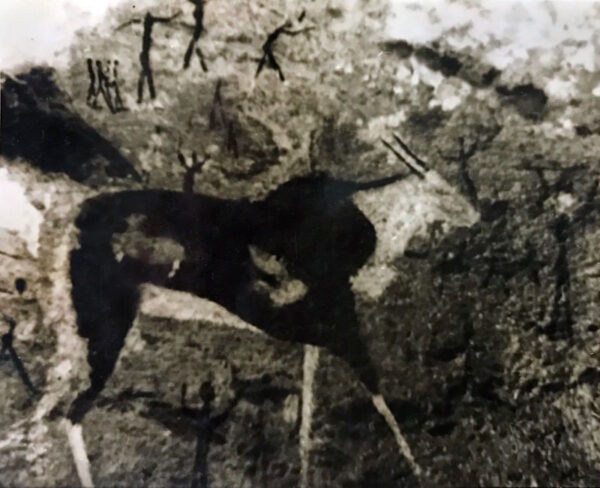
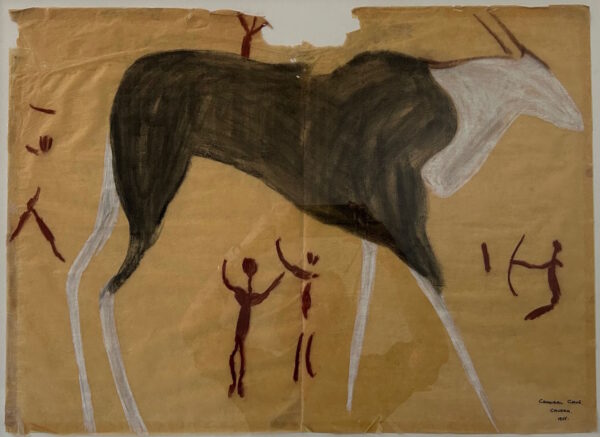
Unique to the NDNR is its fusion of natural beauty and conservation goals with its rich historical and cultural significance. Ancient human settlement in the area is evinced by bushmen rock art to be found within the NDNR. Although some Drakensberg rock art is modern (dating only back to the 19th century), there is also rock art in the region which dates back over three thousand years. Conserving this space therefore also entails conserving one of South Africa’s (and the world’s) rich sources of ancient art and spirituality.
Finally, the NDNR is established for the benefit of those not only within the reserve but also beyond its borders. As a major tourist destination in the area, members of the NDNR constitute key actors in employment and socio-economic upliftment for an otherwise poor part of the country. Members of the local community can look forward not only to jobs and incomes, but also to being part of a collaborative conservation initiative, having the opportunity to provide input which will filter into the management and running of the reserve itself.
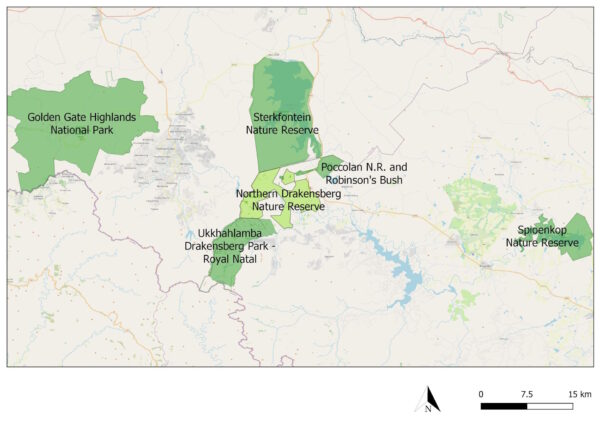
Like the dirt roads of the Northern Drakensberg, the road ahead for the NDNR also has its bumps and potholes. Poaching of game (especially of species recognised as endangered) poses a major challenge, as does arson, soil erosion, and alien vegetation control. However, as with those testy dirt tracks, with enough determination the destination can still be reached. And what is that destination? The preservation of the natural, cultural, and economic resources in this pristine part of the country in perpetuity, not only for the enjoyment and upliftment of ourselves, but for all generations to come.
By Liam King
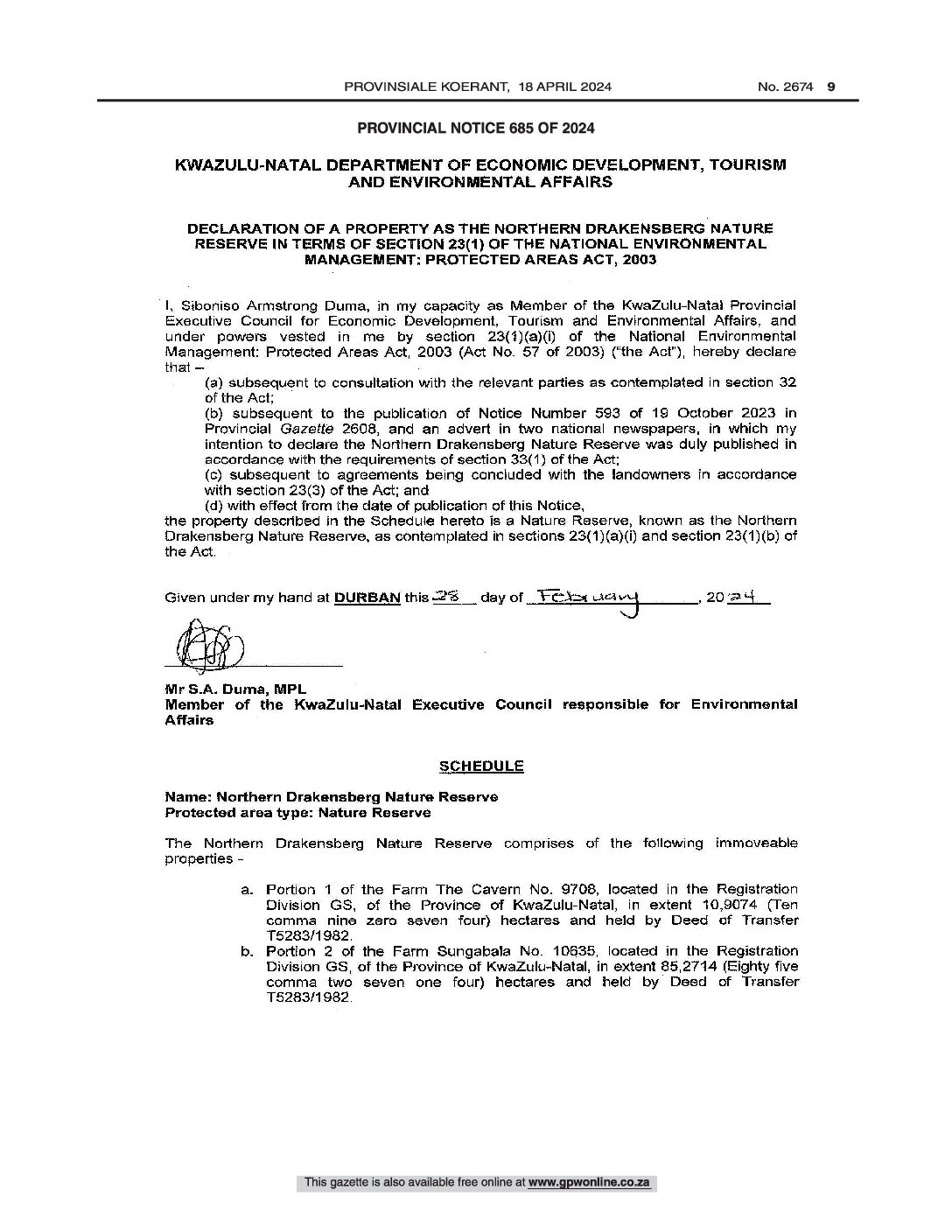

Fantastic news – well done to all those who made it happen
Years in the making but we are so grateful to those that put in many long hours!
Lovely to hear from you, Peter.
Warm wishes to Gill.
Megan
Congratulations . This is fantastic.
Thanks Sandy. A wonderful achievement for the area!
Best wishes
Megan